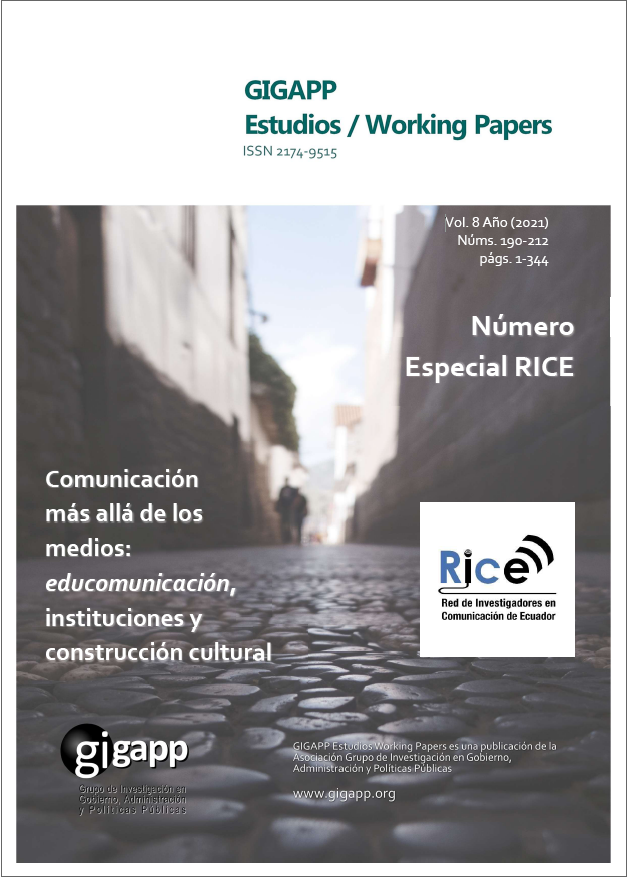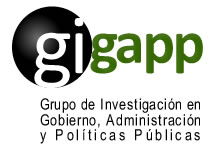El papel de los eventos en las estrategias de marketing y comunicación comercial
Resumen
La presente investigación aborda el creciente protagonismo de los eventos en el ámbito del marketing y de la comunicación comercial. Bajo el paradigma del marketing experiencial y desde un enfoque plenamente centrado en el consumidor se analiza el grado de explotación del potencial experiencial y comunicativo de los eventos en el ámbito comercial. El objetivo principal descrito se aborda mediante un estudio exploratorio y descriptivo de la integración de los eventos en una muestra de estrategias y campañas de comunicación comercial extraída de los casos premiados con el máximo galardón en los “Premios Eficacia en Comunicación Comercial” de la edición 2017. Los resultados revelan una integración incipiente de los eventos en el ámbito descrito. Pese a ello, el análisis realizado y la bibliografía consultada permiten corroborar el papel clave de los eventos como herramienta óptima para la generación de experiencias al servicio de los objetivos de marketing y comunicación.
Descargas
Citas
Arbaiza Rodríguez, F., & Rodríguez Alayo, L. (2016). “La experiencia de consumo en Piura: Análisis de los recursos de Marketing Experiencial en las tiendas de retail moderno de ropa y calzado”, Revista de Comunicación, XV: 128-165.
Arnould E.J., Price L.L., & Zinkhan, G.L. (2002). Consumers. New York: McGraw‑Hill/Richard D. Ir-win
Asociación Española de Anunciantes (2018). Eficacia2017. XIX Edición Premios a la Eficacia en Co-municación Comercial. Resultados. La Comunicación que funciona. Madrid: Madrid: Asociación Española de Anunciantes.
Batthyány, K.; & Cabrera, M. (2011). Metodología de la investigación en Ciencias Sociales. Montevi-deo: Universidad de la República.
Blakeman, R. (2018). Integrated marketing communication: creative strategy from idea to imple-mentation (3a ed.). Lanham: Rowman & Littlefield.
Brakus, J.J., Schmitt, B.H., & Zarantonello, L. (2009). “Brand Experiences: what is it? How is it meas-ured? Does it affect loyalty?”, Journal of Marketing,73(3): 52‑68.
Campillo-Alhama, C.; Martínez-Sala, A.M. (2019a). “Events 2.0 in the transmedia branding strategy of world cultural heritage sites”, El Profesional de la Información, 28 (5)
Campillo Alhama, C., & Martínez-Sala, A. M. (2019b). “La estrategia de marketing turístico de los Sitios Patrimonio Mundial a través de los eventos 2.0”, Pasos. Revista de Turismo y Patrimonio Cultural, 17 (2): 425-452. DOI: https://doi.org/10.25145/j.pasos.2019.17.029
Campos García de Quevedo, G., & Fuente Lafuente, C. (2013). “Los eventos en el ámbito de la em-presa. Hacia una definición y clasificación”, Revista de Comunicación de la SEECI, XV (32): 73-105. DOI: http://dx.doi.org/10.15198/seeci.2013.32.73-10
Diller, S., Shedroff, N., & Rhea, D. (2006). Making meaning: How successful businesses deliver meaningful customer experiences. Berkeley, Calif: New Riders.
Duncan, T., & Moriarty, S. E. (1998). “A communication-based marketing model for managing rela-tionships”, The Journal of marketing, 62 (2): 1-13. DOI: http://dx.doi.org/10.2307/1252157
Galmés Cerezo, M. (2010). La organización de eventos como herramienta de comunicación de mar-keting. Modelo integrado y experiencial. Tesis Doctoral en Publicidad y RR. PP, Departamento de Publicidad y Comunicación Audiovisual, Facultad de Ciencias de la Comunicación, Universi-dad de Málaga, Málaga, España.
Galmés Cerezo, M., & Victoria Mas, J.S. (2012). “La organización de eventos en el contexto de las Comunicaciones Integradas de Marketing (IMC): el valor de la experiencia”, Pensar la Publici-dad. Revista Internacional de Investigaciones Publicitarias, 06 (01), 15-34.
Jiménez Barreto, J., &Campo Martínez, S. (2016). “Marketing Experiencial en FITUR: Análisis de dos destinos competidores, Islas Canarias e Islas Baleares”, Pasos. Revista de Turismo y Patrimonio Cultural, 14 (1): 75-91. DOI: https://doi.org/10.25145/j.pasos.2016.14.005
Hirschman, E.C. y Holbrook, M.B. (1982). “The experiential aspects of consumption: Consumer fan-tasy, feelings and fun”, Journal of Consumer Research, 9 (2): 132–140.
Holbrook, M. B. (2000). “The Millennial Consumer in the Texts of Our Times: Experience and Enter-tainment,” Journal of Macromarketing, 20(2):178–92.
Keller, K. L. (2012). “Understanding the richness of brand relationships: Research dialogue on brands as intentional agents”, Journal of Consumer Psychology, 22: 186–190.
Keller, K. L., & Lehmann, D. R. (2006). “Brands and Branding: Research Findings and Future Priori-ties”, Marketing science, 25 (6): 740-759.
Kitchen, P. J., Kim, I., & Schultz, a. D. (2008). “Integrated marketing communication: Practice leads theory”. Journal of Advertising Research, 48 (4): 531-546.
Kliatchko, J. (2008). “Revisiting the IMC construct: A revised definition and four pillars”. Interna-tional Journal of Advertising, 27 (1):133-160. DOI: https://doi.org/10.1080/02650487.2008.11073043
Kotler, P., Kartajaya, H., & Setiawan, I. (2010). Marketing 3.0: From products to customers to the human spirit. Hoboken, N.J: Wiley.
Lee, M.S., Hsiao, H.D., & Yang M.F. (2010). “The study of the relationships among experiential mar-keting, service quality, customer satisfaction and customer loyalty”, International Journal of Organizational Innovation, 3(2): 352-378.
Lenderman, M., & Sánchez, R. (2008). Marketing experiencial: La revolución de las marcas, Madrid: ESIC.
Martínez-Sala, A. M., & Campillo Alhama, C. (2018a). “Los eventos, herramienta clave en las estra-tegias de comunicación de marcas turísticas: de la linealidad a la transmedialidad”, Revista Me-diterránea de Comunicación/ Mediterranean Journal of Communication, 9 (1): 227-260. DOI: 10.14198/MEDCOM2018.9.1.16
Martínez-Sala, A. M., & Campillo Alhama, C. (2018b). “La gestión de las redes sociales turísticas desde la perspectiva de las relaciones públicas 2.0: la importancia del diálogo”. Revista Interna-cional de Relaciones Públicas, VIII(16): 5-26. DOI: http://dx.doi.org/10.5783/RIRP-16-2018-02-05-26
Masterman, G., & Wood, E. (2006): Innovative Marketing Communications: Strategies for the Events Industry. Oxford: Elsevier Buterworf-Heinemann
Pine, B.J. y Gilmore, J.H. (1999). The Experience Economy: Work is Theatre & Every Business a Stage. Boston, Massachusetts: Harvard Business School Press.
Reid, M., Luxton, S., & Mavondo., A. F. (2005). “The relationship between integrated marketing communication, market orientation, and brand orientation”. Journal of Advertising, 32 (4): 11-23. DOI: https://doi.org/10.1080/00913367.2005.10639210
Shaw, C., & Ivens, J. (2002). Building great customer experiences. Houndmills, Basingstoke, Hamp-shire: Palgrave.
Schmitt, B. H. (1999). “Experiential marketing”. Journal of Marketing Management, 1(5): 53–67.
Shimp, T.A., & Andrews, J.C. (2013). Advertising promotion and other aspects of integrated market-ing communications, ninth edition. Mason, OH: Cengage Learning.
Toffler, A. (1980). La tercera ola. Barcelona: Plaza & Janes.
Tunaroza, J., & Rojas, D. (2016). “La integración de las comunicaciones de marketing como núcleo de las comunicaciones de marca”, Revista electrónica de la facultad de Ciencias Económicas de la Universidad de los Llanos, 23 (1): 40-49
Wimmer, R. D., & Dominick, J. R. (1996). La investigación científica de los medios de comunicación: una introducción a sus métodos. Barcelona: Bosch.
Wohlfeil, M., & Whelan, S. (2006). “Consumer Motivations to Participate in Event-Marketing Strate-gies”, Journal of Marketing Management, 22 (5-6), 643- 669. DOI: https://doi.org/10.1362/026725706777978677
Derechos de autor 2021 Alba-María Martínez-Sala, Dra., Concepción Campillo-Alhama, Dra. (Autor/a)

Esta obra está bajo licencia internacional Creative Commons Reconocimiento-NoComercial-CompartirIgual 4.0.
Aquellos autores/as que tengan publicaciones con esta revista, aceptan los términos siguientes:
a. Los autores/as conservarán sus derechos de autor y garantizarán a la revista el derecho de primera publicación de su obra, el cuál estará simultáneamente sujeto a la Licencia de reconocimiento de Creative Commons Attribution-NonCommercial-ShareAlike 4.0 International (CC BY-NC-SA 4.0) que permite a terceros compartir la obra siempre que se indique su autor y su primera publicación esta revista.
Con esta licencia de acceso abierto, los lectores (usuarios) pueden:
- Compartir — copiar y redistribuir el material en cualquier medio o formato
- Adaptar — remezclar, transformar y construir a partir del material
Bajo los siguientes términos:
-
Atribución — usarios deberán dar crédito de manera adecuada, brindar un enlace a la licencia, e indicar si se han realizado cambios. Puede hacerlo en cualquier forma razonable, pero no de forma tal que sugiera que usted o su uso tienen el apoyo de la licenciante.
-
NoComercial — usuarios no puede hacer uso del material con propósitos comerciales.
-
CompartirIgual — Si remezcla, transforma o crea a partir del material, usuarios deben distribuir su contribución bajo la misma licencia del original.
-
Sin restricciones adicionales: los usuarios no pueden aplicar términos legales o medidas tecnológicas que restrinjan legalmente a otros de hacer cualquier cosa que permita la licencia.
b. Los autores/as podrán adoptar otros acuerdos de licencia no exclusiva de distribución de la versión de la obra publicada (p. ej.: depositarla en un archivo telemático institucional o publicarla en un volumen monográfico) siempre que se indique la publicación inicial en esta revista
c. Se permite y recomienda a los autores/as difundir su obra a través de Internet (p. ej.: en archivos telemáticos institucionales o en su página web) antes y durante el proceso de envío, lo cual puede producir intercambios interesantes y aumentar las citas de la obra publicada. (Véase El efecto del acceso abierto).



